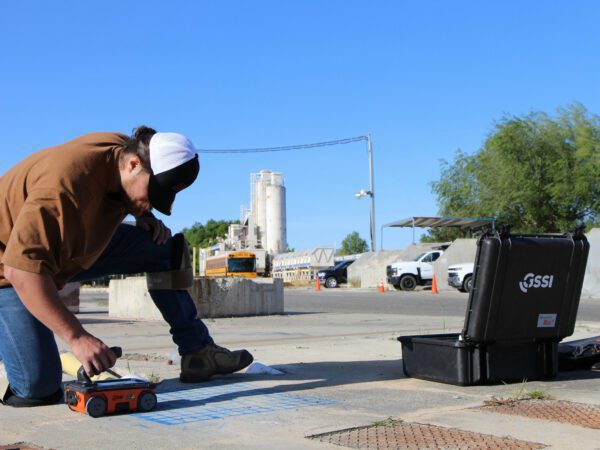Boost Construction Safety And Security with Specialist Concrete Scanning
Boost Construction Safety And Security with Specialist Concrete Scanning
Blog Article
Past the Surface Area: Leveraging Advanced Concrete Scanning Techniques for Unmatched Accuracy and Understanding
In the world of building and facilities maintenance, the mission for accuracy and thoroughness is unending. Advanced concrete scanning methods have become crucial devices in this pursuit, using a look underneath the surface to reveal a globe of critical understandings. By utilizing sophisticated modern technologies, specialists can uncover anomalies, analyze the problem of concrete frameworks, and make informed decisions that shape the training course of jobs. The ramifications of these techniques extend far beyond mere surface-level evaluations, guaranteeing a depth of precision and understanding that is exceptional.
Importance of Advanced Concrete Scanning
The value of utilizing innovative concrete scanning techniques exists in the unrivaled precision they use for spotting sub-surface abnormalities and guaranteeing architectural integrity. By employing innovative technologies such as ground-penetrating radar (GPR), electromagnetic induction, and progressed finder imaging, building and construction professionals can dig underneath the surface of concrete structures with a level of precision that far exceeds traditional inspection methods. Concrete Scanning. These strategies enable the identification of surprise hazards like rebar deterioration, gaps, avenues, or post-tension wires that can jeopardize the security and safety of a structure gradually
Furthermore, progressed concrete scanning provides vital understandings into the overall condition of a concrete aspect without the demand for invasive steps, lessening the threat of creating damage throughout the analysis process. The capacity to pinpoint the precise place and deepness of possible concerns enables targeted repairs and upkeep, inevitably prolonging the life expectancy of the framework and maximizing its efficiency. Basically, the importance of sophisticated concrete scanning can not be overemphasized in the world of building and construction and framework upkeep, where accuracy and dependability are paramount.
Kinds Of Cutting-Edge Technologies

Anomalies and Flaw Discovery

In addition to GPR, concrete scanning strategies like thermography and impact-echo screening are also reliable in finding abnormalities and defects. By leveraging these innovative strategies, specialists can proactively attend to architectural problems, guaranteeing the longevity and safety of concrete structures.
Assessing Concrete Condition
How can designers precisely evaluate the problem of concrete structures to ensure their long life and safety and security? Examining the concrete condition is an link important aspect of maintaining framework stability. Various advanced concrete scanning strategies are utilized for this purpose. Ground-penetrating radar (GPR) is commonly made use of to evaluate the internal framework of concrete, finding spaces, splits, and various other anomalies that might jeopardize its strength. In addition, impact-echo testing can provide understandings into the density and stability of concrete elements. Ultrasonic pulse speed testing is an additional important method for examining concrete quality by gauging the speed of audio waves with the product.
Incorporating non-destructive screening methods with visual evaluations enables for a detailed evaluation of concrete problem, making it possible for designers to recognize possible concerns early on and implement timely maintenance or repairs. By leveraging these advanced methods, engineers can make certain the lasting resilience and security of concrete structures.
Enhancing Decision-Making Processes
In the realm of framework administration, enhancing decision-making processes is critical for ensuring the reliable upkeep and long life of concrete frameworks. Boosted decision-making processes in concrete administration entail utilizing sophisticated scanning strategies to collect detailed information on the problem of frameworks. By leveraging technologies such as ground-penetrating radar and 3D imaging, stakeholders can make educated choices concerning support, fixing, or substitute strategies.
These progressed scanning methods offer important understandings into the inner composition of concrete, identifying possible problems such as voids, splits, or rust that may not show up on the surface area. This degree of in-depth information permits positive upkeep preparation, reducing the threat of architectural failures and increasing the total life expectancy of concrete structures.
In addition, by integrating digital paperwork and analysis devices into the decision-making procedure, stakeholders can track the evolution of concrete problems gradually, enabling predictive maintenance strategies and optimizing resource allowance. Inevitably, the combination of advanced concrete scanning methods boosts decision-making processes by giving unrivaled precision, understanding, and efficiency in framework management.
Final Thought
To conclude, advanced concrete scanning methods offer exceptional precision and insight in finding abnormalities, problems, and examining the problem of concrete frameworks. By leveraging sophisticated innovations, decision-making procedures can be boosted, leading to more educated and reliable remedies for keeping and fixing concrete infrastructure. These techniques play a vital duty in ensuring the safety and durability of concrete frameworks, making them a crucial tool in the field site web of construction and engineering.
Furthermore, progressed concrete scanning supplies very useful understandings into the overall condition of a concrete element without the need for invasive steps, reducing the danger of triggering damage throughout the analysis process - Concrete Scanning. One more innovative modern technology is 3D X-ray scanning, which supplies detailed images of the internal framework of concrete, offering valuable details without the demand for devastating screening. In Addition, Concrete Cover Meters are utilized to measure the density of concrete cover over support bars precisely. Improved decision-making processes in concrete management involve utilizing innovative scanning strategies to gather detailed information on the problem of frameworks.In final thought, advanced concrete scanning techniques supply unmatched precision and understanding in identifying abnormalities, problems, and evaluating the condition of concrete frameworks
Report this page